Tritones are unique musical intervals that span across three adjacent whole tones (six semitones), cutting an octave in half.
Known as the “Devil’s Interval” or “diabolus in musica,” a tritone is either an augmented fourth or a diminished fifth, depending on its placement in a musical composition.
It’s known for creating a sense of tension and unease in music.
As a music producer, understanding tritones is super useful because they can add dramatic effects to your tracks and help you manipulate emotions.
In today’s article, we’ll break down:
- What is a tritone & why it was called devil’s music ✓
- Devil’s Interval history ✓
- Music theory fundamentals ✓
- Tritones in major scales (e.g., C major/G major) ✓
- Tritones in the minor scale (e.g., minor third/minor sixth) ✓
- Harmony and melody breakdowns ✓
- Tritone in hip-hop, edm, and other genres ✓
- Advanced music production techniques ✓
- Augmented fourth vs. diminished fifth distinctions ✓
- Complex chord combos ✓
- Much more about what is a tritone ✓
By the end of this guide, you’ll finally be able to answer the question, “What is a tritone?” once and for all.
Plus, use it in creative ways to create tension-filled sounds like a pro (perfect for certain movie scores and video games, by the way).
So, let’s dive in…
Table of Contents
- What is a Tritone?
- The Music History & Mystique of the Devil’s Interval
- Understanding Tritones in Music Theory (Musical Interval Basics)
- The Role of Tritones in Harmony and Melody
- Tritones Across Musical Genres
- Producing with Tritones (For Producers)
- Common Misconceptions
- The Tritone Interval in A Nutshell
- What is a Tritone: Final Thoughts
What is a Tritone?
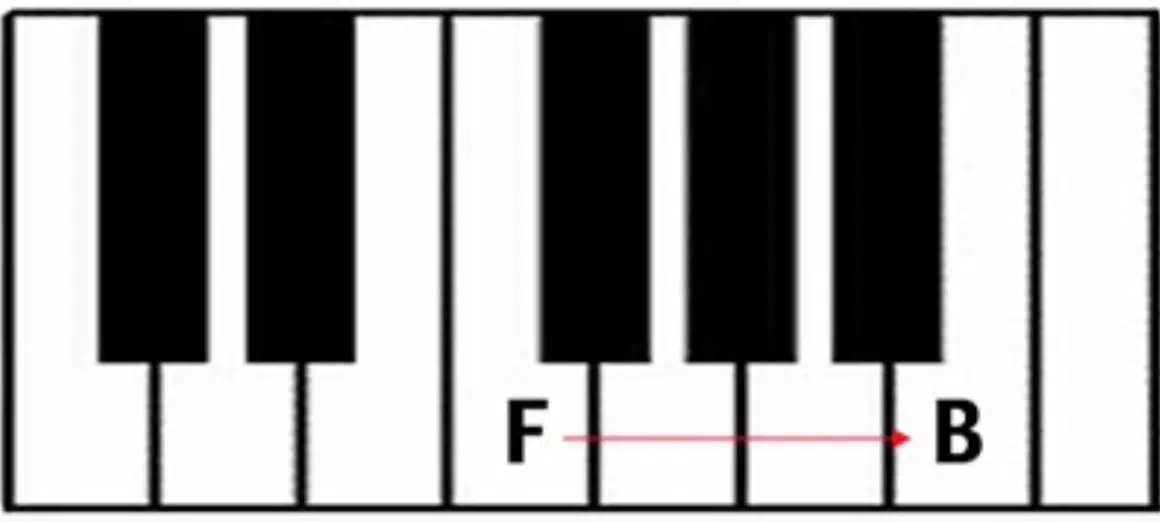
What is a tritone, you wonder?… Well, a tritone is a complex musical interval spanning exactly three adjacent whole tones/whole steps or six semitones.
Not one or two whole tones, three whole tones (this is the whole thing).
It divides the octave into two equal parts; for instance, if you start on C in the C major scale, moving up three tones would land you on F#.
Therefore, the tritone would be between C and F#.
It’s also noted in notations as an augmented fourth or a diminished fifth, depending on the harmonic context.
When it comes to its sound, a tritone creates a dissonant and tense auditory experience, which is why it’s so effective for creating dramatic effects in musical compositions.
It’s a sound that doesn’t resolve easily on its own 一 demanding either a return to a familiar tonal center or a move to another interval for resolution.
When talking about your own tracks, you can try a simple progression in C major where a C chord (C-E-G) moves to an F# diminished (F#-A-C).
This perfectly incorporates the tritone to drive a strong resolution to a more stable chord like G major (G-B-D), which gives people that sense of relief and completion.
The tritone can crossover to various musical styles/genres because its unique tension can be used for so many different musical reasons, which we’ll break down later.
It’s a favorite in the composers as it can instantly change the whole direction of a piece, which really brings uncertainty and anticipation to life.
From the suspenseful tritone in the opening of “The Simpsons” theme to the strategic placement in Beethoven’s “Für Elise,” where it emphasizes moments of climax and resolution, it offers a range of emotional opportunities.
So, now let’s break down why this intriguing scale was considered devil’s music all throughout music history/medieval times.
The Music History & Mystique of the Devil’s Interval
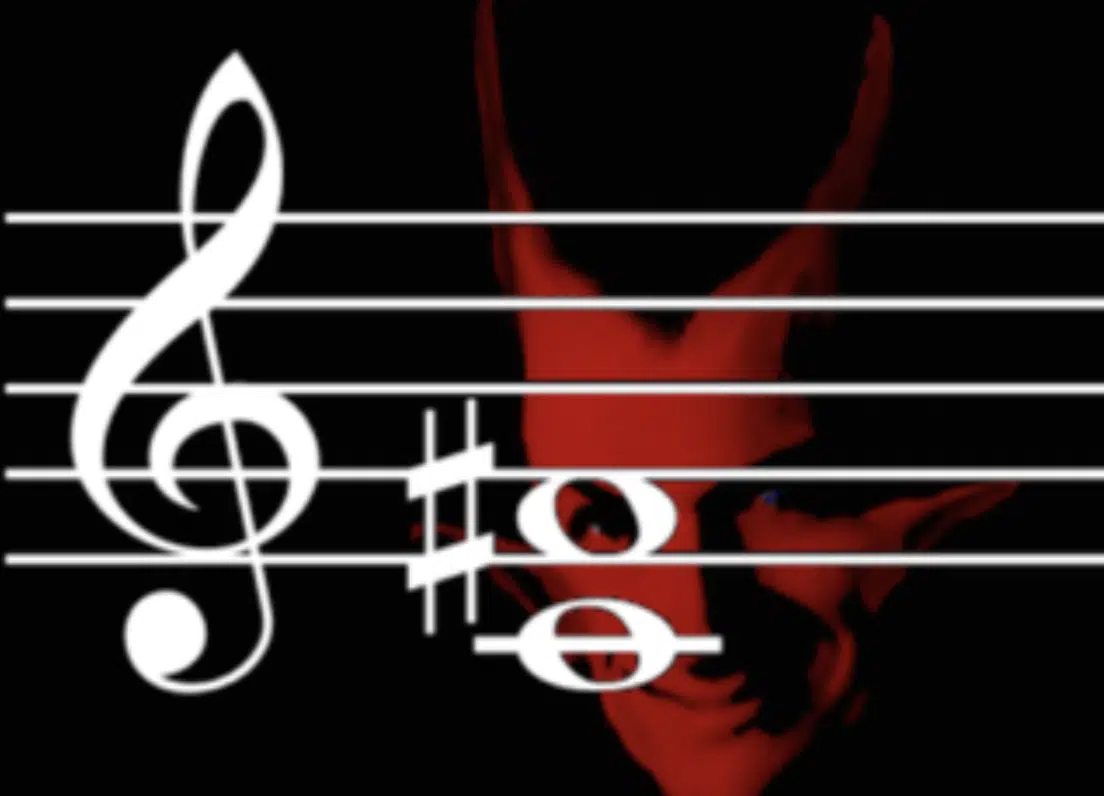
The term “Devil’s Interval” originated in the Middle Ages, a time when the tritone’s dissonance was associated with the sinister sound of demons.
It was actually banned in ecclesiastical musical compositions, meaning it wasn’t allowed to be played in, or around a christian church of any kind.
Plus, it’s unsettling sound led to some crazy superstitious beliefs as well.
The most popular one was that it was most certainly the ‘diabolus in musica’ (devil in music) 一 giving rise to its now notorious nickname.
And if you did play it near any place of worship, by the way, it was considered outright defiance or a sign you were evil.
Despite its dark reputation in those contexts, the Renaissance era saw a shift as musicians started to appreciate its expressive power.
This brought it from a forbidden sound to a treasured artistic tool.
Claudio Monteverdi, for example, who was a super famous italian composer, used tritones in his operas to bring that extra layer of emotional anguish.
And let’s just say, people were really moved by this intense sound.
Over time, the perception of the tritone totally evolved and by the time of the Romantic era (early 1800s), it was fully accepted and embraced.
Composers like Franz Liszt exploited the tritone’s dramatic potential, notably in his “Dante Sonata,” where it vividly paints a musical picture of Hell.
It aligned perfectly with its thematic exploration of Dante’s “Inferno.”
Bottom line, the ability that this ‘devil in music’ has to really make an impact solidified it’s place in the toolkit of western music enthusiasts around the world.
Understanding Tritones in Music Theory (Musical Interval Basics)

To fully understand what a tritone is, you’ve got to know the basics of musical intervals.
An interval in music is the difference in pitch between two sounds.
Intervals are the building blocks of melodies and harmonies, with the tritone being one of the most recognized due to its unstable yet expressive quality.
In the context of a C major scale, the tritone can be located between the fourth and seventh scale degrees (F and B in a C major scale).
This placement is key because it forms a symmetrical and direct contrast with more stable, consonant intervals like:
- The perfect fifth (interval of 7 semitones between two notes)
- Major third (interval of 4 semitones between two notes)
Which, as you probably know, are foundational to Western harmony.
Advanced music theory goes crazy when it comes to exploring the dissonant qualities of tritones and their resolution tendencies.
For example, in jazz harmony, a tritone between the third and seventh of a dominant seventh chord creates a strong desire for resolution…
Which is beautifully met when the chord resolves to a major chord a fourth above (or fifth below), giving perfect tension and release vibes.
It can seriously enhance the harmonic complexity and emotional depth of musical compositions.
Side note, if you want to learn all about a perfect fourth, perfect fifth, intervals, scales, etc. then make sure to check out our music theory article.
-
Pro Tip: How Tritones Fit Within the Major Scale
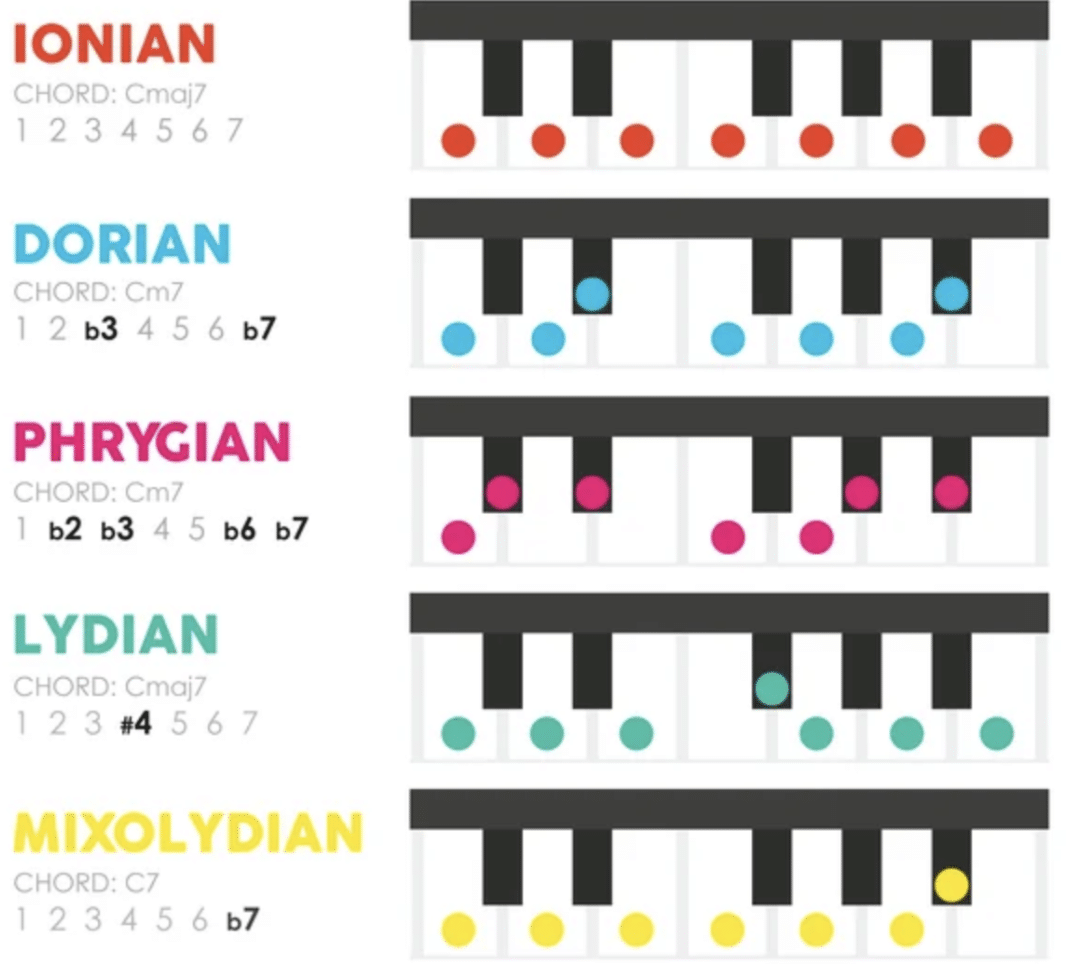
In the structure of the major scale, tritones play a key role in defining the tonal center and setting up musical tension.
In the C major scale, the tritone occurs between the notes F and B.
This interval is actually the only tritone within the scale 一 representing a perfect balance between the scale’s consonant and dissonant elements.
The positioning of the tritone in the C major scale and other scales like the harmonic minor or melodic minor scale sets the foundation for many traditional and western music techniques.
NOTE: If you want to download the sickest harmonic minor and melodic minor scales MIDI packs in the game, we’ve got you covered.
The Role of Tritones in Harmony and Melody

Tritones, as we touched upon, can help to develop both harmony and melody in any music composition, regardless of style.
Their unique sound provides a dramatic flair to musical phrases, which makes them super popular in genres that rely heavily on tension and release.
In harmony, tritones are often used to introduce a sense of instability that needs to be resolved, driving the progression forward.
For instance, in a G7 chord (G-B-D-F), the tritone between B and F demands resolution, typically moving to a C major chord (C-E-G).
This is where the tension created by the tritone finds its perfect ending.
When you’re wondering what is a tritone, this harmonic progression is the perfect example 一 because, remember, it’s all about adding depth and complexity.
This technique dramatically alters the harmonic direction and introduces a richer, more complex sound.
A classic example of tritone substitution can be seen in the jazz standard “Autumn Leaves,” where the dominant chord can be substituted to add unexpected color.
Hence the name ‘tritone substitution.’
In melody, the tritone can be used to create lines that stand out, again, due to their inherent tension.
Composers and songwriters around the world often use this interval to evoke a strong emotional response from the listener because it really works.
Tritones can also be essential in modal interchange and complex jazz harmonies, where they are used to modulate between keys/scale degrees or add color to extended chords.
The flexibility of tritones when you’re throwing together melodies is invaluable.
It will help you explore outside the boundaries of traditional tonality and create innovative soundscapes, challenging/expanding the listener’s perception of harmony.
Tritones Across Musical Genres

Tritones are present in various musical genres, each using it differently to enhance the listeners experience. So, if you’re wondering what is a tritone, breaking it down in terms of genres could really help.
#1. Tritones in Hip-Hop
In hip-hop, tritones can help you create gritty, tension-filled beats.
A famous example is Dr. Dre’s production style, where tritones are layered within samples to produce a dark, intriguing vibe.
One that goes perfectly with the narrative depth of the lyrics.
It helps to establish a mood that resonates with the thematic elements of struggle and authenticity (super prevalent in hip-hop and trap culture).
#2. The Use of Tritones in Rock and Metal
Tritones are iconic in rock and metal, often as the foundational element of riffs that define the sound of these popular genres.
The tritone found in the opening riff of Black Sabbath’s “Black Sabbath” not only sets the tone for the song but also helped establish heavy metal as a genre in the first place.
This powerful use of the tritone creates a sense of foreboding and tension that is ideal for the dark themes that metal music is famous for.
#3. Exploring Tritones in Electronic Music
Electronic music producers use tritones all day to help add extra tension and complexity, often in lead synths or pad sounds.
In tracks like Deadmau5’s “Some Chords,” tritones within the layered synths create a dissonant, yet engaging vibe.
One that captivates the listener and really sticks in their head after 一 demonstrating the tritone’s versatility beyond traditional musical genres.
Producing with Tritones (For Producers)
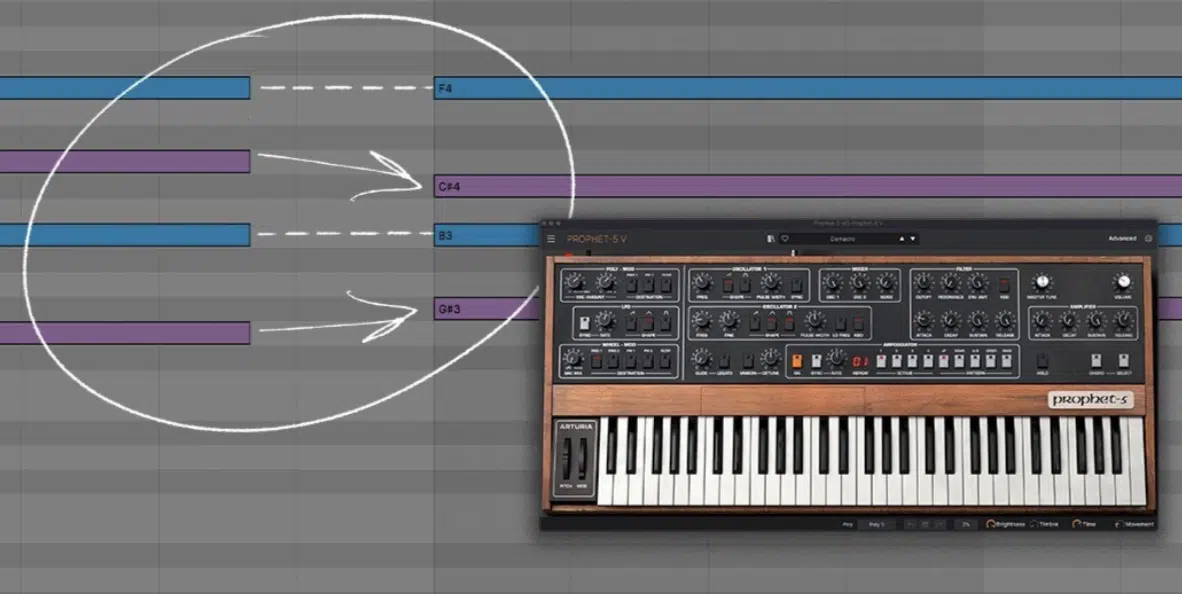
For music producers, mastering the question ‘what is a tritone and how can I take advantage of it?’ can really enhance your skills.
The use of tritones can actually be a game-changer, I promise.
Whether you’re layering tritones in an electronic patch or using them to add tension in the transitional section of your song, it’s guaranteed to be stacked with emotions.
An advanced technique involves using tritone substitutions in chord progressions to alter the harmonic flow subtly.
Even though it’s subtle, it can still dramatically shift the mood and direction.
For example, you can discover unique sounds that enhance the texture of your musical compositions by:
- Adjusting octaves
- Applying different effects
- Combining tritones with other intervals
This can lead to more innovative tracks that stand out.
You can also layer tritone intervals in different octaves to create a fuller, more harmonically textured sound.
NOTE: When experimenting with tritones on the piano, try playing around with the white keys between F and B.
This will help you visually and aurally grasp the tritone interval.
Additionally, shifting this pattern around the piano can expand your understanding of how tritones interact across different key areas.
Common Misconceptions
When you’re learning all about what is a tritone, there are some common misconceptions that will help you get a better understanding. So, let’s close things out by breaking it down.
-
Augmented Fourth vs. Diminished Fifth

While often referred to interchangeably as tritones, augmented fourths and diminished fifths have subtle differences in their harmonic implications.
In a C major scale, the augmented fourth (between C and F#) carries a different harmonic suggestion than the diminished fifth (B to F).
These little details between diminished fourths and fifths are important in any composition because the enharmonic changes can affect the resolution and overall mood of your music.
-
Using Tritones in Complex Chords
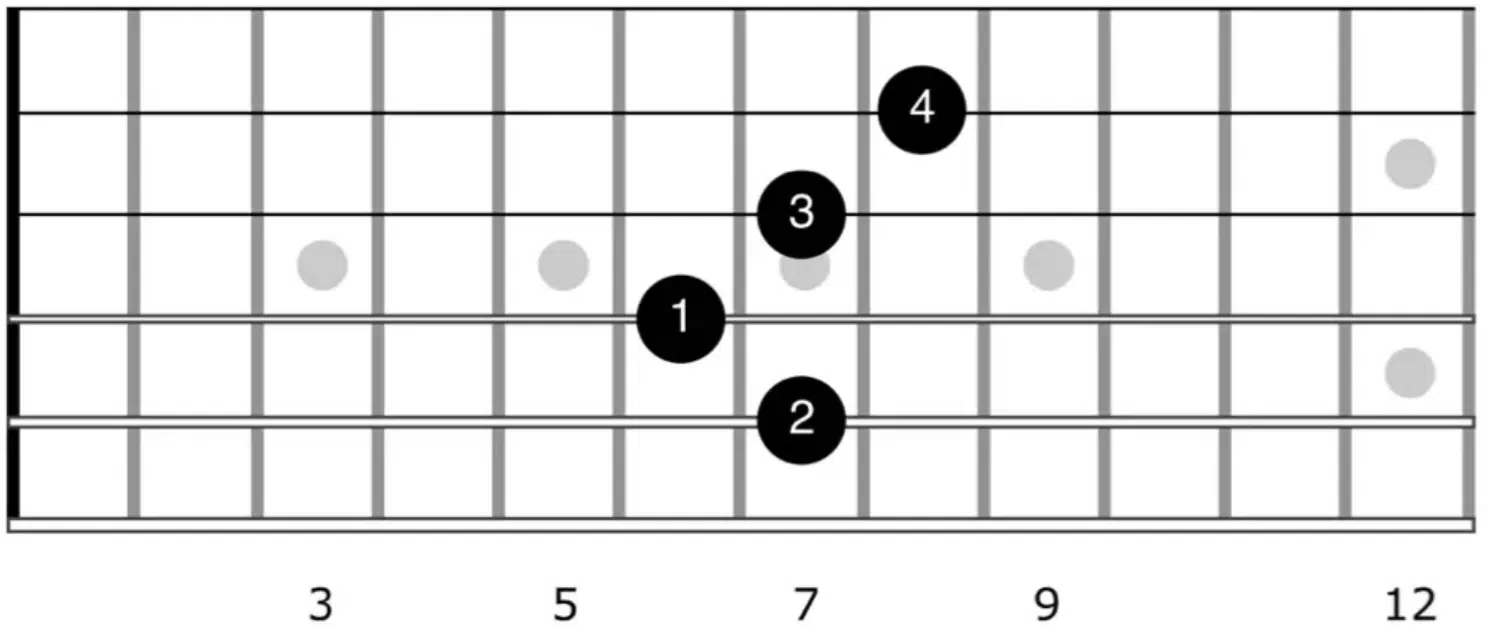
The Jimi Hendrix Chord
In more advanced compositions, tritones are crucial in forming complex chords like the dominant seventh sharp ninth chord, famously used in “Purple Haze” by Jimi Hendrix.
This chord, often called the Hendrix chord, combines a dominant seventh with an augmented ninth, where the tritone between the third and seventh degrees adds a strikingly dissonant but also super appealing quality.
It just shows how much tritones contribute to the iconic sounds of rock music and blues.
They enhance the entire musical narrative/context with their unique tonal properties.
The Tritone Interval in A Nutshell
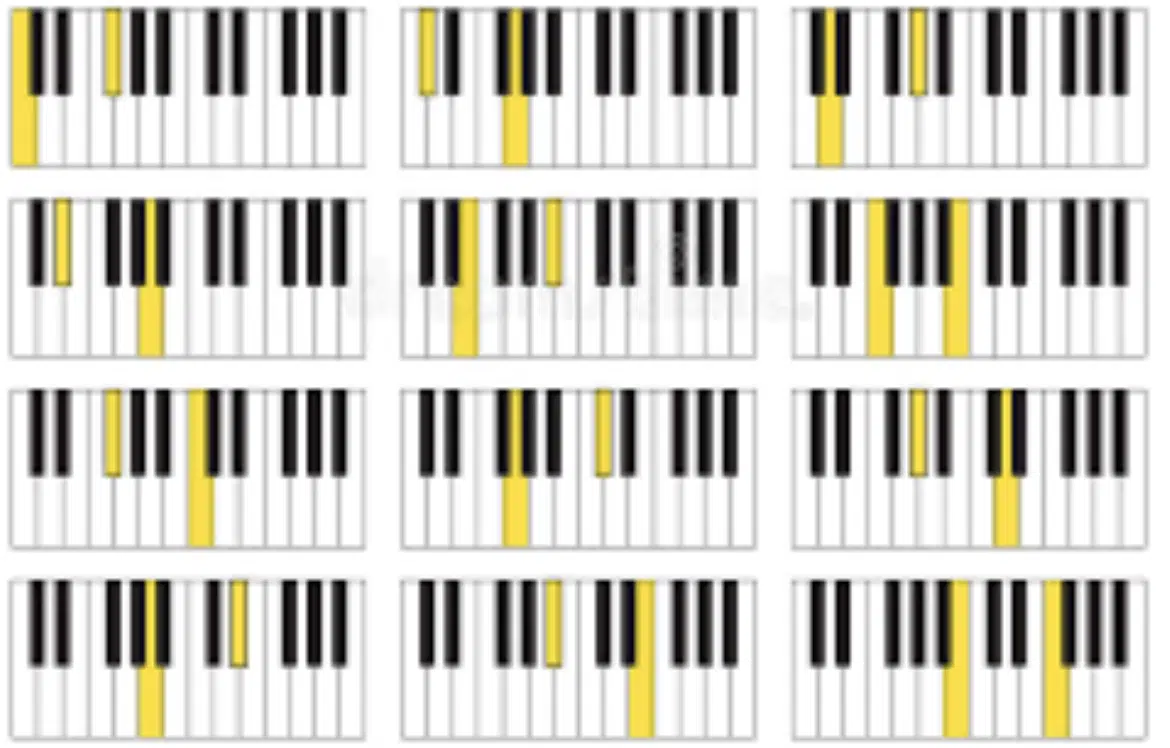
The tritone interval, as we discussed, splits an octave into two distinct parts with its six semitones that have the power to shift moods instantly.
This interval (occurring as the only one tritone in the diatonic scale) fundamentally changes the harmonic vibe of musical compositions.
Within a scale like the C major, the tritone formed between the note F and the note B uniquely stands as the only one, showing off its rarity and star role.
This arrangement of two notes (F and B) is a bridge between other notes, of course, but it also injects a profound sense of tension and release.
So, if you’re aiming for a more dynamics, they’re your best friends.
Also, the relationship between these two notes highlights the interaction with different notes 一 offering a fresh perspective on traditional harmonies.
The tritone interval is instrumental in defining the soundscape across various musical:
- Genres
- Styles
- Cultures
It allows composers and producers to explore beyond conventional boundaries, using the same tritone for insanely different vibes.
Especially when combined with other notes for dramatic effect, naturally.
Because of its structure, each tritone interval proves how just two notes can determine the entire emotional sound and harmonic flow of your piece.
It can even be the key to unlocking new musical expressions altogether.
This distinct use of the tritone interval is actually why it remains a core music theory study, essential for anyone looking to really master it.
What is a Tritone: Final Thoughts
If you want to really answer the question, “what is a tritone?” you need to explore its history and understand its key role in music theory.
Seeing how it’s applied across different musical genres never hurts, either.
That’s why we broke down all the necessary concepts and techniques throughout this article so you can master it in no time.
Now, you’ll be able to identify and use tritones in your own tracks like a pro.
To further enhance your understanding (and overall theory skills), you’ve got to check out the most legendary MIDI Chord Pack in the game right now.
It features over 1,200 drag & drop MIDI files for you to use however you’d like.
This pack is a complete collection of every fundamental chord and chord progression in existence 一 making it an invaluable resource for any producer.
It eliminates the need for complex music theory, so you to focus on what matters most: making amazing music.
Plus, as a special bonus, you also get a 15-page walkthrough PDF to show you how to best use the pack.
Along with 20 premium Serum presets specifically designed for this pack (killer!).
So, now that you know all the answers to the question, ‘what is a tritone?’ you can go out and start experimenting with your new knowledge.
This way, your tracks can be super emotionally-driven and downright addicting.
Until next time…







Leave a Reply
You must belogged in to post a comment.